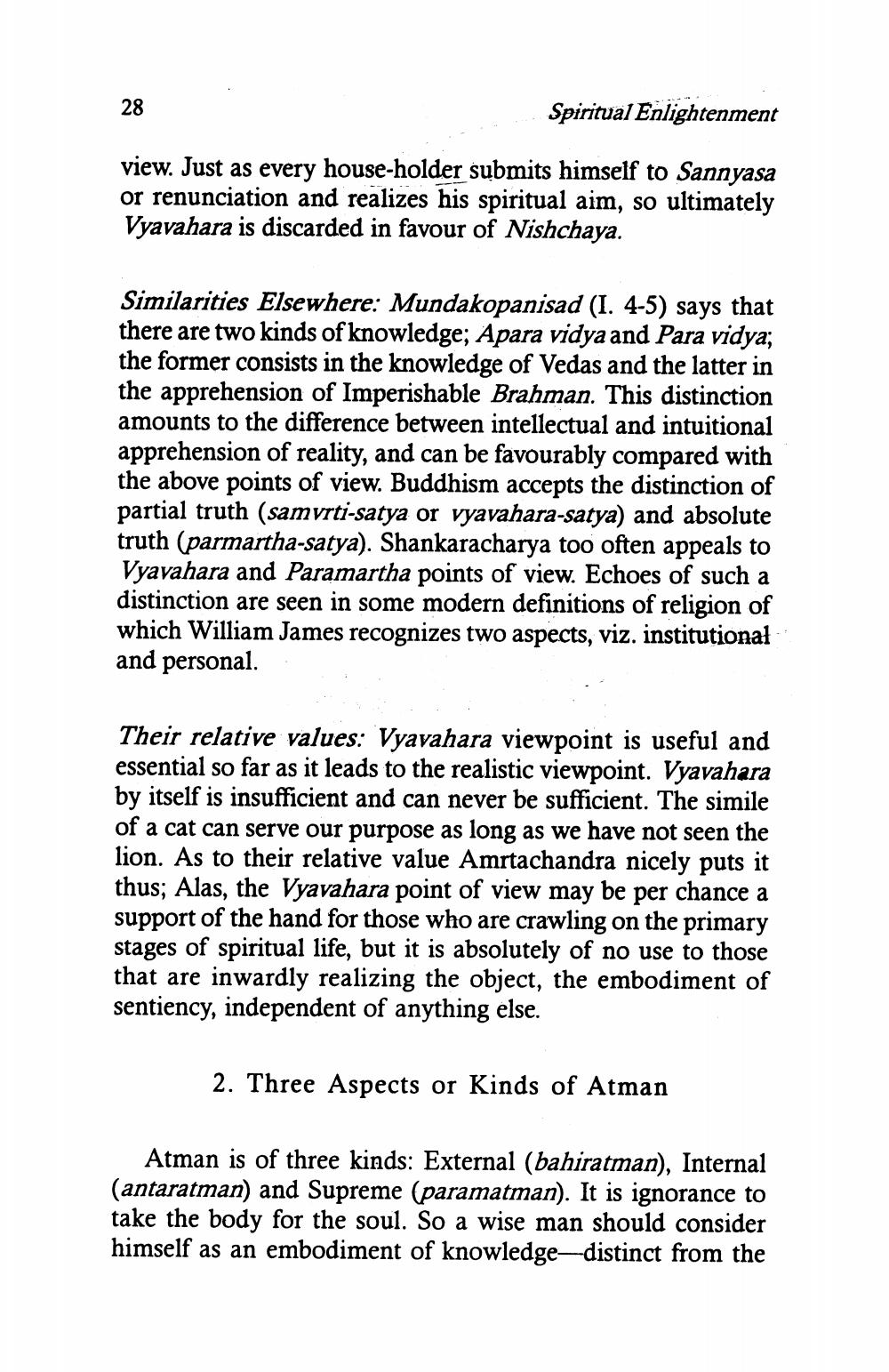________________
Spiritual Enlightenment
view. Just as every house-holder submits himself to Sannyasa or renunciation and realizes his spiritual aim, so ultimately Vyavahara is discarded in favour of Nishchaya.
Similarities Elsewhere: Mundakopanisad (I. 4-5) says that there are two kinds of knowledge; Apara vidya and Para vidya; the former consists in the knowledge of Vedas and the latter in the apprehension of Imperishable Brahman. This distinction amounts to the difference between intellectual and intuitional apprehension of reality, and can be favourably compared with the above points of view. Buddhism accepts the distinction of partial truth (samvrti-satya or vyavahara-satya) and absolute truth (parmartha-satya). Shankaracharya too often appeals to Vyavahara and Paramartha points of view. Echoes of such a distinction are seen in some modern definitions of religion of which William James recognizes two aspects, viz. institutional and personal.
Their relative values: Vyavahara viewpoint is useful and essential so far as it leads to the realistic viewpoint. Vyavahara by itself is insufficient and can never be sufficient. The simile of a cat can serve our purpose as long as we have not seen the lion. As to their relative value Amrtachandra nicely puts it thus; Alas, the Vyavahara point of view may be per chance a support of the hand for those who are crawling on the primary stages of spiritual life, but it is absolutely of no use to those that are inwardly realizing the object, the embodiment of sentiency, independent of anything else.
2. Three Aspects or Kinds of Atman
Atman is of three kinds: External (bahiratman), Internal (antaratman) and Supreme (paramatman). It is ignorance to take the body for the soul. So a wise man should consider himself as an embodiment of knowledge-distinct from the




